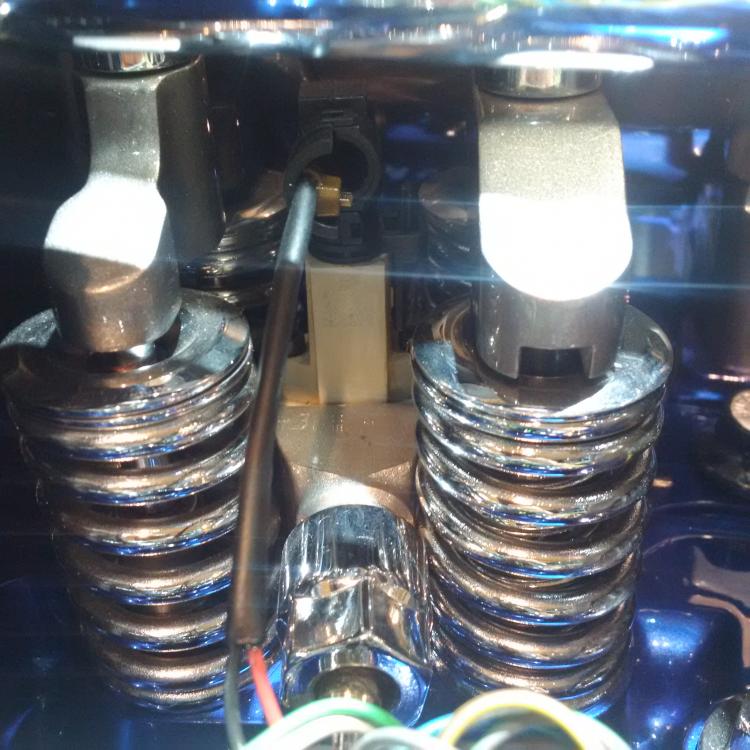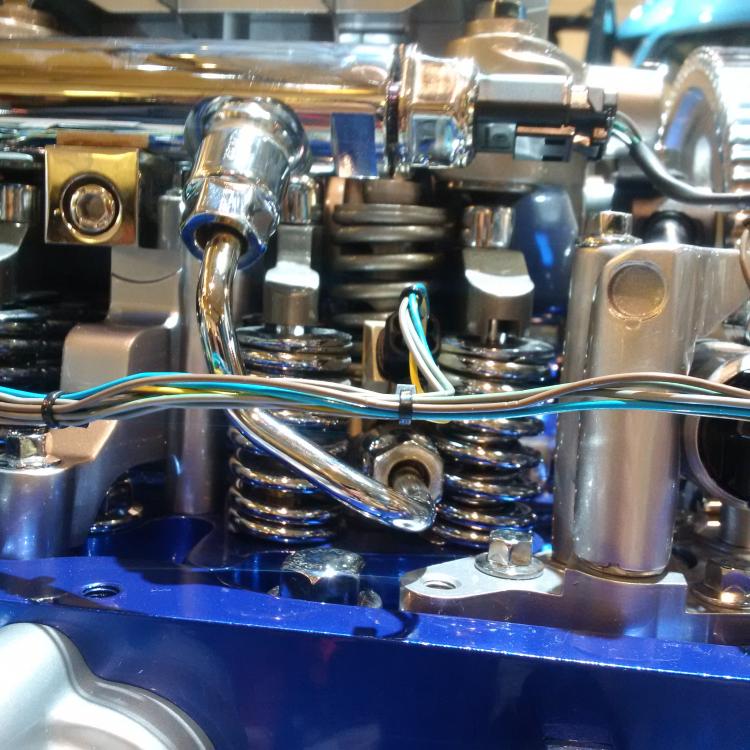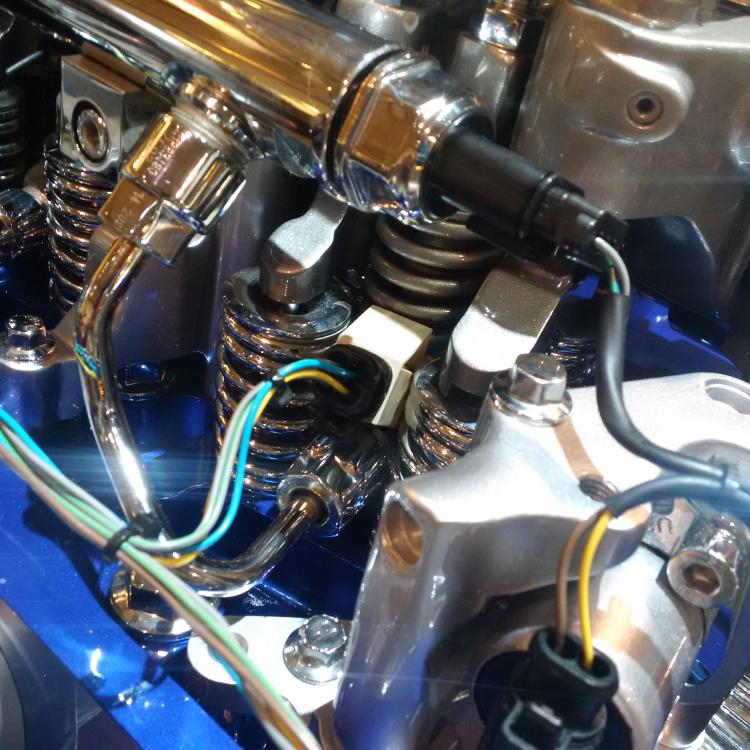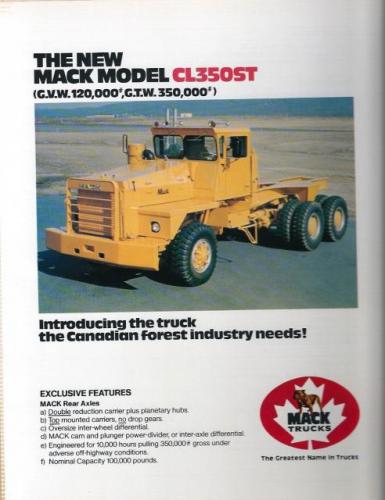-
Posts
1,089 -
Joined
-
Last visited
-
Days Won
3
Content Type
Profiles
Forums
Gallery
Events
Blogs
BMT Wiki
Collections
Store
Everything posted by bbigrig
-
The CXN you are interested in was built in the USA. Shouldn't be any issues. You may find the truck spec'd a little heavier and the rear spread a little wider (like 60" instead of 52-55"). You may need to change the speedo back to MPH from KM. That's about it.
-
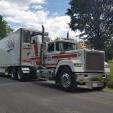
20,000 hrs and 310,000 miles
bbigrig replied to ndvaughn's topic in Modern Mack Truck General Discussion
The mile and hours match up for a fleet I used to work at hauling cement in bulk tanks. Pulling loads added miles. Blowing loads into silo's added hours. Seems legit for that type of use. -
I know after a little investigation locally that the same fleets that had trucks (DD15 powered) with Turbo compounding are now DD15 powered fleets without it. They don't even notice a Difference. The DD engineer said the same thing of thier US customers. If you are not using the bottom end of your torque/power band on a regular basis. When are you going to reap the benifits? Terrain, load an proper truck specs will effect it's usage. Weather the Benz Global engine/truck is In Europe or not should not make a difference. Is it possible that the North American "keep it simple stupid" way of evaluating product usefulness has finally proven a European over design wrong. (inconceivable!) In this case, I would agree. I wouldn't need it or want it on any of my trucks.
-
I spoke to a DD engineer from MI a few weeks ago. The DD15's compound set up was removed a while back as most customers specing the DD15's were highway customers that didn't need the extra low end grunt. (most fleets buy 15's over 13's for resale value) Their operating range is highway running the black top. With the flywheel compounding removal they saved almost 100lbs off the engine for the customers tare weight. The engineer went on to say most customers needing heavy bottom end grunt ordered DD16's anyway. More to go wrong is all that is for what you get out of it. That and a Volvo rear gear train that already has its own issues.
-
Because you can buy a Volvo VN with a decent sized sleeper if needed powered by the 16L engine cheaper then a Mack Titan. All I ever hear customers complain about is the price point of the Titan and lack of options over any comparable competitors truck. Buy a Volvo and it still ends up in the same pocket. Lol.
-
Check the water pump as well if you havnt already. The impeller may be spinning on the shaft as it heats up. B.W. Fans are a pain.
-
Keep in mind there are a lot less MP10's on the road then other MP Engines. The customers I know in Ontario with Titans are not all that impressed. Not all issues are power plant related. On the Volvo side D16's are more common, use basically , same injector/cup setup and have issues with both fuel related components like the smaller engines. It's basically the same. They are still a small percentile of the VN's on the road but are 10x more common then MP powered Titans here. The common rail system coming for Mack (which may be months away) has been in use/testing in Volvo engines Europe for almost 3 years now. They say it works fine. I will be waiting patiently for the proof on North American roads.
-
It's a very strange set up. I've seen a mock up but have yet to get enough answers to how it's set up. It doesn't have a plunger at every injector. I'm told Mack won't see this engine until Volvo enjoys the roll out first. The MP10/D16 will not be getting the common rail so I was told.
-
The bugs I speak of are in the roll out of the common rail system on an engine that Mack and Volvo are just starting to incorporate into the coming product. I'm sure in your 10 years of experience, every new product you have worked on has had slight bumps in their rollout. It's not always the fuel system manufacturer themselves that have the issue but how the are incorporated into the engine or end truck/bus product. In a fleet I play with of almost 2000 units which 75% are now common rail fuel systems, the fuel system failure rate is just as high as older unit injector engines. The maker of the common rail system is immaterial to me in the discussion. I don't believe I ever stated which series of engine/ fuel system was better or worse. Only that the diag on common rail can take longer depending on the issue it is presenting. The expense in parts for repair seems higher as well. When I speak of common rail I am aware of the pro's of the fuel system. But to me the basic designs between whose tag is on the pumps are similar. Saying all unit injector set ups were terrible is not exactly true either. Comparing the more reliable 60 series fuel system to Mack/Volvo's (to no end) issues only show that some were better then others. EUP's......geeeeezzzz. Let's not go there. I see the Paccar MX engines are finally showing most of the similar issues the E-junks did. Since when has Volvo used EUP's? Did you mean unit injectors?
-
Weather it's the larger high pressure pumps or the smaller versions, the common rail design itself has its own bugs when compared to unit injectors. (volvo's unit injectors are not a good comparison, the 60 series faired much better) The 2017 Volvo/Mack set up yet to be released has the rail mounted under the valve cover. To me that's a huge step backwards for repair costs and preventative maintenance. Time will tell.
-
Excellent point. I forgot to add when explaining the difference between the 2 fuel systems, that on common rail there is no rocker arm for an injector plunger. The common rail injector is fed a high pressure of fuel from the fuel rail that is regulated by the high pressure pump and fired into the cylinder by electronic signal from the ECM.
-
Common rail has cups in the head for the injectors but the exposure for failure is different Unit injectors like the MP have a fuel feed and return ported into the cast of the head. (cup failure usually allowed combustion gas into fuel system) Common rail is fed high pressure fuel directly to the injector by a tube (similar to E7-Etech) and the return is ported into the head. The lower portion of the injector is sealed by a copper washer in the cup. Way fewer failures with this cup set up. I'm hoping the emissions systems and hardware will improve soon....but I'm not holding my breath. New one piece system, new issues. Hopefully not.
-
Common rail has it own issues. You may be avoiding the injector cup issues but with the higher pressures fuel system parts such as injectors and high pressure pumps wear faster. There is a little more work to diagnosis on common rail then unit injectors. I've worked on Cummins common rail (Bosch). It's ok. It will suck if they mount the rail and lines under the valve cover. It will make it more work to diagnose just to gain appearance. But from what I've seen of the Volvo D series it looks like it's the way they have decided to go. Let's face it, want to know what the MP will look like, look at the D-series. Seems with the throttle plate on the intake and flywheel driven turbo, we are taking on stuff that didn't do so hot on the DD15 series of engines. Looks like job security for Mechanics at the dealer level.
-
Never seen a V-mac equipped engine with the Kysor system. One should make a other redundant. It was stated earlier that the engine is V-mac. Stating that you have found the hand primer soft narrows this down to a mechanical fuel system failure.
-
New econvance and remaned engine had the same issues. The complaints were not blue smoke, it was white , chugging till it all evened out.(incomplete combustion from over fuel cold) Seemed the programing didn't adjust the rack as fast with V-mac II. V-mac I didn't have this issue on the same set up pump/econovance. It was originally a common complaint from first time owners up here on cold start days who bought VMAC II trucks. Nature of the beast and one of the better engines.
-
I would check your ignition switch. The fuel gauge being powered up shouldnt go through either ecm or vecu. It should not be powered up with the key off. Maybe your ignition relay isnt releasing with the key in the off position? Your parkbrake and check engine light should come on and stay on when you turn your key to on with the engine not running.ABS light i'm not sure of. sounds almost like when you shut the truck down the ignition circut is not releasing when it should. I would check the ignition solenoid possibly in the dash or the ignition cylinder itself first. going to need to trace power starting at the key when the key is in the off position.
- 7 replies
-
- electronic malfunction light
- ABS Light
- (and 3 more)
-
Rough idle/both black/white smoke on start up: Your truck being a 96 it should be V-mac II and were well known to over fuel for the first few seconds (like white smoke and cough like an SOB on start up in cold weather) it's the "programming" and seemed to be a big issue with 95-97 engines on cold start.We had 3 trucks with that cold start up issue. These start issues with V-Mac II seem only present in cold climate operations. should be less apparent if truck is warm or plugged in over night. For the no start issue: Your rack actuator controls fuel delivery out of the pump.the actuator is what turns your rack to no fuel on key off cycles and moves the rack on all inputs from your throttle position sensor when the key is on.(Actuator must be energized to allow any fuel delivery to the injectors) if it fails it will not allow fuel to be injected.(no fuel rack position) If it is starting to fail you can have hard start issues that seem like lack of prime issues but its not. actuator issues do not usually show lack of power issues, usually issues on start up. I had had 97 that basically did the same thing. Off and on issues that seemed like loss of prime for months. Finally truck wouldn't start no matter how much cranking. Actuator failed. Check for codes in ECM. You mave have rack actuator fail codes. A loose injector harness plug or loose pins (grey plug that attaches to pump) can cause this issue as well. Twist the plug during start up and see if it makes me difference for what seems to be a lack of prime or no start only. This is all if your fuel system is otherwise as it should be, not sucking air or leaking.
-
Whoops, need to make sure. From the picture of the pump it looks like a mechanical pump but want to be sure. It's not an electronic injection pump is it? Can't see the rear section of the pump for rack actuator or linkages. If it's V-mac it's your rack actuator or pump plug loose/worn. I see the timing sensor port plugged but that could have been from the rebuilder.
-
With the cracked pickup tube, it will only be an issue on start up as when it's running it draws enough fuel with a small portion of air to keep running and working under most conditions. Once you shut down it throws an air bubble into the system that would normally be either full or submerged in fuel. The truck may start an run and then stall out and need to purge the air bubble. Not saying it's the issue here. Just explaining the theory depending on the size of the crack. Dropping the fuel suction line into a bucket of fuel would be a test. Anything on the return that is on the outside of the engine would leak and is not under suction before lift pump or pressure after lift pump. Unless the section of return that is being questioned provides a restriction for keeping fuel pressure in a feed cavity it won't effect loose of prime.
-
I had an issue with an E6 I chased for ever. Turned out to be a cracked fuel tank pickup tube. It was cracked and bent at the weld to the fitting inside the tank. Check that as well.
-
-
These kind of deals usually are in the favor of the big boy's in this case Nascar anyway. Are they not? If I'm not mistaken it's kind of a bidding war to see who gets to hitch their ponies up to Nascar's wagons. Those trucks are probably next to free in lieu of Mack or whom ever getting to publicly state their trucks are pulling for the "go fast turn left" officials. I would have like to have seen both trucks be set forward CHU's but they look good none the less. Last ones I saw were the Superdog's with E9's. Those were classy.
-

1988 RD688SX
bbigrig replied to bbob61's topic in Antique and Classic Mack Trucks General Discussion
I've always loved how tough RD's look. That truck is a fine example. -

Duel front axle Superliner
bbigrig replied to MACKTRUCKS4's topic in Antique and Classic Mack Trucks General Discussion
The purpose of going away from liftable axles is road wear. When cornering and a liftable axle is lifted it shifts the weight that axle was carrying to the remaining axles that are grounded. As a test, a fully loaded Mack CV granite was loaded with 22 tons of aggregate in a dump box. The truck had 44K rears and 20K fronts with a 20K rated lift axle. When the lift axle mounted behind the cab was lifted almost 27K pds was shifted to the front axle. The ministries up here figure that spreading the weight on constantly grounded axles will keep the black top longer. Those trucks carrying max gross usually have more then 72"'s of spread on the twin steers and 72" of spread on the drives. Any axles in between must be self steer axles that only lift when empty (controls out of cab) or in reverse through the reverse switch. -

Duel front axle Superliner
bbigrig replied to MACKTRUCKS4's topic in Antique and Classic Mack Trucks General Discussion
I've seen a few twin steer Superliners in Quebec. All were Dump trucks and the second steer was under the cab. Most are just behind the cab for maximum spread in Eastern Canada. Western needs them further ahead.
BigMackTrucks.com
BigMackTrucks.com is a support forum for antique, classic and modern Mack Trucks! The forum is owned and maintained by Watt's Truck Center, Inc. an independent, full service Mack dealer. The forums are not affiliated with Mack Trucks, Inc.
Our Vendors and Advertisers
Thank you for your support!




